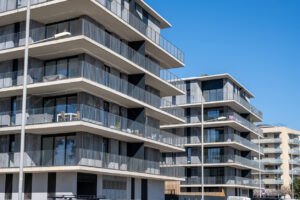Real property investors understand that today’s market is challenging, and that it’s important to take advantage of every deduction to which they’re entitled. In modern tax planning, cost segregation has become a well-established and indispensable strategy for property owners. Achieving the maximum deduction is important, but it’s paramount that we don’t give those deductions away simply because an agent questions them. This paper will explore the history of two cases being referenced in the 2025 preliminary version of the Audit Technique Guide. Despite appearing to reinforce IRS positions, these cases contain analytical flaws, gaps in evidence, and set dangerous precedent for property investors.
The two cases that will be explored are La Petite Academie v. Commissioner and AmeriSouth XXXII, Ltd v. Commissioner. In each case the outcome was heavily influenced by the fact that they concluded with summary judgements.
La Petite Académie v. Commissioner
In the La Petite v. Commissioner case, there were ten asset classes deemed ineligible for the Investment Tax Credit. The court concluded with a summary judgement in favor of the IRS. Two classes are worth discussion. First, playground fencing was determined to be a §1250 structural component, I.E. §1250 property that’s depreciated over 39 years. As such, that asset was determined to be ineligible for the investment tax credit. This position can be easily refuted by citing stronger precedents. For starters, Rev. Proc. 87-56 explicitly includes fencing in asset class 00.3 – Land Improvements and assigns a 15-year life. The argument can also be made that playground fencing is accessorial to a daycare business. Assume that an investor purchased the daycare and converted it into an office. A typical office does not need this fencing for normal operation and maintenance, as they are not concerned that Susan from accounting is going to run off or get into the road if taken down. There are always an exception in tax, but preparers shouldn’t readily give this one up.
The court also determined that all of the exterior lighting was §1250 property, and as such, ineligible for the ITC. The taxpayer could have argued this from multiple angles.
The two most important considerations here are:
- Was the lighting necessary for the normal operation and maintenance of the building?
- What was the placement and design intent of the lighting
For the lighting, the taxpayer may have been able to argue that its purpose was to illuminate landscaping or to highlight some other aesthetic feature. In cost segregation, the facts need to be properly documented with photographs, notes, and reliable cost information. In a quality report, the tax position of the preparer relies on facts and is clearly stated. Lighting that is non-essential to the operation or maintenance of the building, or that is purely decorative is eligible for short life treatment. Unfortunately, the facts were not properly developed, documented, or represented in the case. All of which contributed to this one resulting in a summary judgement.
AmeriSouth XXXII, Ltd. v Commissioner
Over the past year, AmeriSouth has been increasingly referenced in IRS audits. Yet despite this summary judgement being from 2012, (13 years old), the IRS has been unwilling to let a challenge get back to tax court. Unfortunately, many taxpayers have conceded what is most likely a defensible position based on this ruling. It’s important to understand, there were a lot of issues with this case. For starters, after this went to court, AmeriSouth sold the property and stopped responding to everyone, including its own lawyers. As such, the IRS was granted a summary judgement that failed to properly address the facts. The only reason this one hasn’t made it back to court is that the judgement is more valuable to the IRS as a threat to taxpayers and preparers that don’t know the history.
Let’s examine the facts and how both sides got this wrong. The firm that prepared the cost segregation study was overly aggressive. It qualified assets as short-life property that are necessary to the primary function of the building, or that were ineligible entirely. For example, site preparation and earthwork were allocated entirely to land improvements with a 15-year life. Initial clearing and grubbing and site prep should generally be allocated to land since it has an indefinite life and the expense will not need to be incurred again. (See Eastwood Mall v. Commissioner.) A portion of the costs that were allocated may have qualified, but the cost segregation study did not properly identify and separate relevant assets. Specifically, it did not separate the initial site preparation costs from those related to sidewalks, parking, and driveways. This is a great example of why a quality cost segregation study includes proper documentation such as detailed schedules, photos, and an in-person site visit.
After the case went to court, the Commissioner added utility lines such as sewer, gas, and underground site electric to his original memo. This is an important point to understand, because Rule 142(a)(1) shifts the burden of proof to the respondent, the IRS in this case. Again, both sides got this wrong. The Commissioner argued that AmeriSouth did not own the utility lines. AmeriSouth contested this originally, but both parties spoke in general terms about “easements” and which party “generally” pays for the installation and maintenance of these assets. The taxpayer did not hold the burden of proof, and most likely should have prevailed based on the lack of evidence presented by the IRS. We did not get to see this legal decision play out entirely. After AmeriSouth stopped responding, these assets were eventually addressed in the court memo, in part with the following statement:
“While AmeriSouth could rebut that evidence by showing that it owned the sewer main, it has not done so and we thus deem this issue conceded.”
- The court also ignored important precedents for other assets:
The court disqualified HVAC dedicated to dryers by claiming it to be a structural component. Assets related to HVAC should consider the Sole-Justification Test (See Piggly Wiggly v. Commissioner). A dryer is not required for normal operation and maintenance, nor are its electrical outlet or vent line.
The court disqualified electrical outlets for appliances. A microwave is not required for the normal operation and maintenance of a building. Further, electrical allocations are allowed for property based on use. (See Scott Paper v. Comm. and Illinois Cereal Mills v. Comm.) - The court disqualified kitchen cabinets & countertops. These are non-permanent assets that are regularly replaced (See Whiteco v. Comm.). Apartments occasionally charge additional fees for added cabinetry. These assets are also more likely to be replaced several times over the life of the building and are not included in the definition of structural components. Both factors contribute to the argument that these assets are accessorial and nonpermanent. I.E. §1245 property.
- The court disqualified kitchen sinks. Many apartments in the northeast in cities such as New York City have only a single sink that functions as both a bathroom and a kitchen sink. The dual use NYC fixture described is most likely required for the normal operation and maintenance of the building. It contributes to the argument, however, that a separate kitchen sink is not required so long as there is at least one primary sink. Further, many of these fixtures don’t even require cabinetry to function. It isn’t uncommon to see a fixture mounted directly to the wall or supported in some other way.
We should also consider that the court used mocking language regarding the taxpayer’s position with remarks such as:
“We are tempted to say this is why AmeriSouth threw in everything but the kitchen sink to support its argument – except it actually throws in a few hundred kitchen sinks.”
While the La Petite judgement is noteworthy, it can be said that any audit referring to the AmeriSouth case should examined closely.
- Request supporting technical rationale.
- Cite stronger precedent (Whiteco, Illinois Cereal Mills, Piggly Wiggly, Morrison).
- Cite industry standards – Ask why the case hasn’t been back to court in 13 years despite rejection by many of the largest firms providing cost segregation.
It’s crucial that preparers understand these cases and are ready to point out the inconsistencies and lack of coherence. They also need to be able to support their positions. A quality study includes well documented facts, applies consistent tax positions, adheres to professional standards, and considers taxpayer intent. Skip the fly-by-night firms that employ short cuts, don’t conduct site visits, and can’t answer the tough questions. Hire a reputable firm! For added piece of mind, look for companies that employ at least one Certified Cost Segregation Professional (CCSP). Remember, a discount isn’t always a bargain.
With the IRS increasingly leaning on these cases, practitioners need to be able to technically deconstruct these faulty tax positions. Don’t give away deductions to which you’re entitled! The AmeriSouth decision wasn’t just weak, it was a judicial shortcut caused by a vanished taxpayer and a lazy legal analysis. It deserves a footnote in audit history, not a citation in IRS memos!








